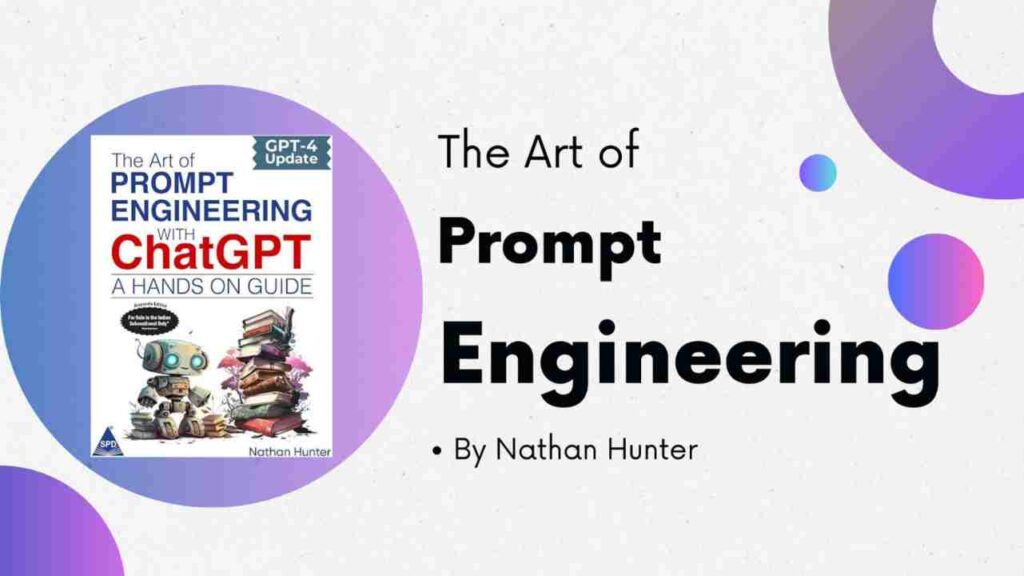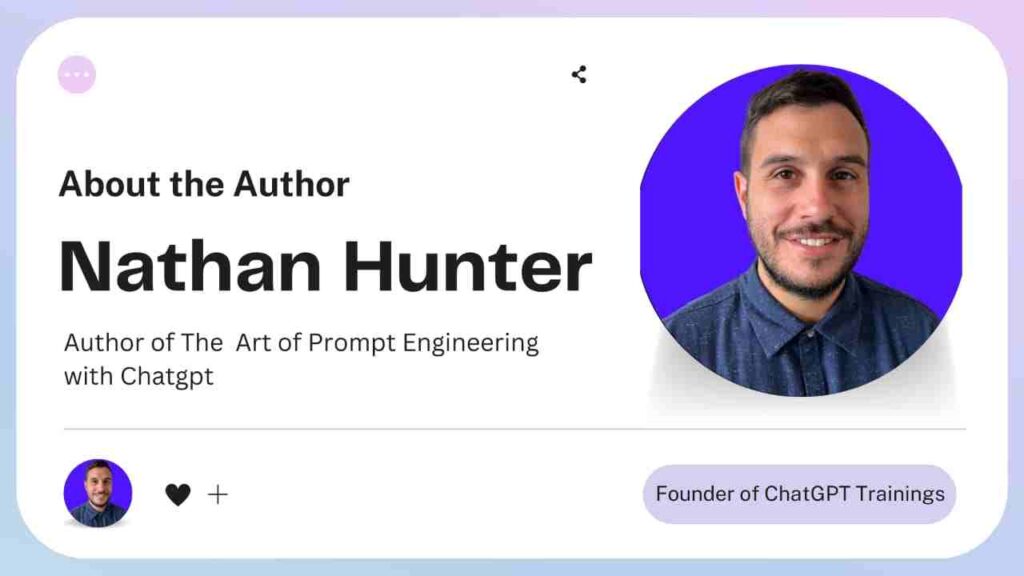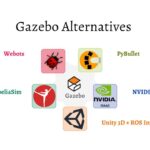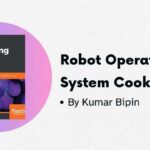Have you ever felt frustrated when an AI doesn’t give you the answer you’re looking for? It’s like asking a question but getting only half of the story. The solution lies in the art of prompt engineering—the art of asking the right questions in the right way. It’s not just about asking questions; it’s about asking them the right way. But how do you learn this skill? You can take an online course, or better yet, dive into some of the best books on prompt engineering such “The Art of Prompt Engineering with ChatGPT: A Hands-on Guide (learn AI Tools the Fun Way!)” by Nathan Hunter.

This book isn’t just a guide; it’s your first step into a future where prompt engineering is set to become an demanding skill. Let’s explore how this book can be your first step towards the of prompt engineering.
Table of Contents
Bibliographic information
| Title | The Art of Prompt Engineering with ChatGPT: A Hands-on Guide |
| Author | Nathan Hunter |
| Publisher | Independently Published, 2023 |
| ISBN | 1739296729, 9781739296728 |
| Length | 208 pages |
Check out another excellent read: Prompt Engineering: The Art of Asking by Yaswanth Sai Palaghat.
About the Author Nathan Hunter
Nathan Hunter is a tech enthusiast. He is the founder of ChatGPT Trainings. He has spent over a decade helping organizations build leadership and soft skills.

His journey into the world of ChatGPT began out of frustration. As he found himself struggling to communicate with the tool effectively. He immersed himself in the dynamic field of prompt engineering to overcome his challenges. He researched, experimented, and refined his skills.
His passion for technology and artifical intelligence drove him to write “The Art of Prompt Engineering with ChatGPT: A Hands-on Guide (learn AI Tools the Fun Way!).” His mission is clear: to make AI more accessible,
Chapters of The Art of Prompt Engineering with Chatgpt by Nathan Hunter
Introduction
In the beginning of this book, “The Art of Prompt Engineering with ChatGPT,” Hunter discusses the AI landscape, where technology is advancing faster than ever.
He says that you might ask, “Why does ChatGPT sound so human?” According to Hunter, it’s like teaching a child to speak by exposing them to countless human conversations. The AI learns patterns, nuances, and even the rhythm of our speech. It’s a bit like magic, yet grounded in complex algorithms.
As I read this, I couldn’t help but recall Steve Jobs’ words: “Innovation distinguishes between a leader and a follower.” And here, AI is leading the future.
Tools and Techniques
In the second chapter, Tools and Techniques, Hunter talk about some practical strategies of Prompt Engineering to get better output. He begins with the conversational approach as if you’re chatting with a knowledgeable friend.
By reading “The Art of Prompt Engineering with Chatgpt by Nathan Hunter“, you’ll learn how roleplay can help refine your prompts, making them more effective to get better results.
Hunter also discusses the importance of training ChatGPT by providing clear, structured inputs. You can think of it as teaching a student with step-by-step guidance.
Additionally, he covers chunking: breaking down complex tasks into manageable parts to improve ChatGPT’s performance.
Advanced Prompt Engineering
In the 3rd chapter, Advanced Prompt Engineering, Nathan introduces co-creation. Here you and ChatGPT collaborate to refine your prompts.
He also highlights the importance of formatting your output. As clear prompts lead to clear answers.
Building personas is another useful technique. When you create detailed character profiles, it can deliver responses that fit specific characters or roles.
Additionally, he introduces chain prompting, a method of linking prompts to build complex interactions.
GPT-4
In the next chapter,GPT-4, of this book, The Art of Prompt Engineering with Chatgpt, Nathan discuss about the new features of ChatGPT-4.
He explains that “more context equals more power,” meaning the more information you provide, the better the AI can respond.
Hunter also highlights GPT-4’s multimodal capabilities. Which allows it to process both text and image inputs. Hunter also reminds us that despite these advances, GPT-4 remains probabilistic—meaning it can still generate unexpected results.
Use Cases
I think this is the most important chapter where you learn about the use cases of ChatGPT. There unlimited possibilities of using these AI tools.
- It helps with brainstorming, acting as an ever-creative partner who never runs out of ideas.
- Need translations? It offers quick, accurate language support, like having a multilingual friend.
- It assists with crafting content, from blog posts to full-length books.
- It provides coding tips and explanations, speeding up your programming journey.
- It even suggests recipes based on your ingredients, functioning like a personal chef.
The Future has just begun
In the final chapter of “The Art of Prompt Engineering with Chatgpt” by Nathan Hunter, he looks beyond the horizon of AI advancements. He discusses how we’re moving past Moore’s Law, which once predicted rapid technological growth. You might worry, “Will AI replace me?” Hunter reassures us that AI is a tool to enhance, not to replace.
Final Thoughts
Nathan Hunter’s The Art of Prompt Engineering with ChatGPT: A Hands-on Guide (learn AI Tools the Fun Way!) offers a comprehensive guide to mastering AI interactions. From understanding advanced prompt strategies to exploring future possibilities, Hunter emphasizes that AI is a powerful tool rather than a replacement. As you explore these insights, it opens doors to endless possibilities. If you’re ready to dive deeper, you can grab your copy here on Amazon.









